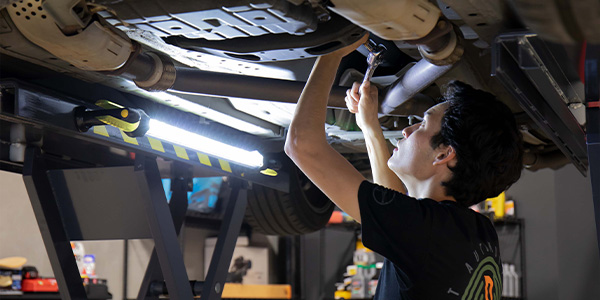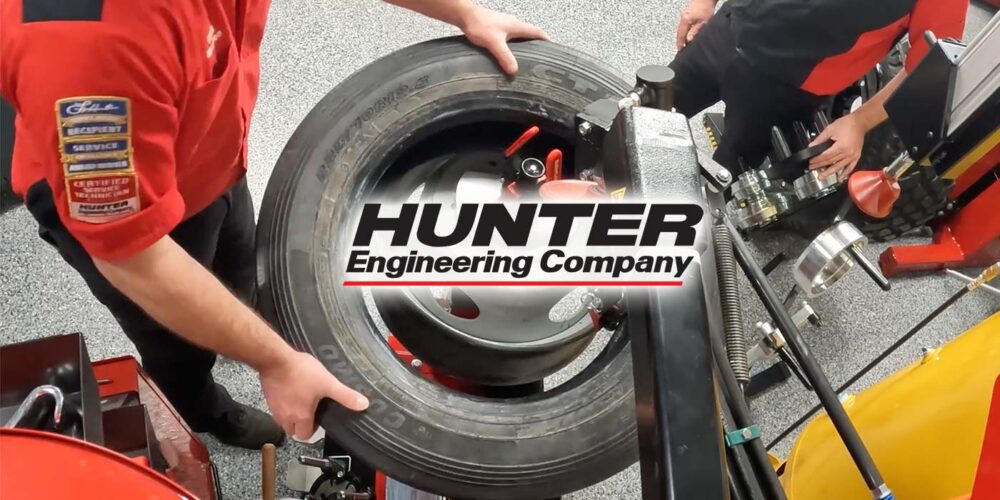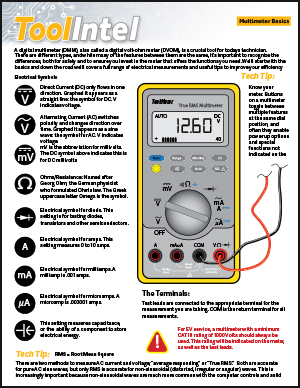By Steve LaFerre
Senior Editor
TIRE REVIEW Magazine
Given the thousands of options available, it has become more than a little difficult to keep up with tire math. Vehicle makers have presented dealers with the opportunity to stock more SKUs than ever before – and that trend continues.
Take a look at aspect ratios, for example. The once dominant 75-series has given way to 60-, 55- 50-, 45- and 40-series and lower still. Your job is to let customers know that while these tires may have the same outside diameter and approximately the same total footprint area, there are some differences.
The higher the aspect ratio, the longer and narrower the footprint area will be. For your customers driving in snow-belt weather this is a good choice for slicing through snow and slush. A lower aspect ratio tire has a wider footprint area, which isn’t necessarily good for snow and slush (unless you find a snowflake symbol on the sidewall).
Unless you want to get to the fine print, there is no real math to this – at least as far as your customer is concerned. Suffice it to say, wider is not better in the winter, but is great for cornering when warmer weather breaks.
Tire math – even without complex equations – is still very important for any tireman to understand, especially when it comes to proper fitment and, most importantly, load carrying capabilities.
One of the most common math problems you’ll face has to do with replacing low profile radials. Often, you’ll find that a lower profile replacement tire has approximately the same outside diameter as a high aspect ratio OE unit. Many times, the difference is only a fraction of an inch, so chances are good that it will fit the vehicle. However, you must still physically check clearances on the vehicle. Neither you nor the customer wants an after-sale surprise.
When you change aspect ratios, you have to consider load capacity. Here’s an example: Say your customer wants a bigger footprint, and wants to move from a 70-series OE tire to a 60-series replacement. Let’s say the outside diameters are virtually the same, and you checked the clearances. Now you need to get out your load-inflation tables and make sure the new tire has at least enough inflation pressure to match the load capacity of the OE tires.
The idea here is to take your time with every fitment, no matter how routine it may seem. Check all measurements and manufacturer specifications
Pickup Truck Math
Because changes in pickup truck loading can vary so much, the effects of handling can be great. First, look at the pickup truck in its unloaded state, say 1,500 pounds on the front tires and 1,200 pounds on the rear. Remember that lateral acceleration is the percentage of a vehicle’s weight that the tires generate in lateral force. To find that percentage, divide lateral force by weight.
In our example, each of the front tires has the capability of generating 600 pounds of lateral force when loaded at 750 pounds (half of the total weight on the front).
So by dividing the front tires’ combined 1,200 pounds of lateral force by their 1,500-pound combined loading, you’ll see that they can generate 0.800 g of lateral acceleration. This can also be called cornering power or cornering capability. Following the same mathematical logic you’ll see that the rear tires can generate 0.883 g.
In this example, the rear of the truck has 4.1% more cornering capability than the front. This indicates that the vehicle may face an understeer condition that will cause the front tire to lose traction before the rear tires.
What if we put 600 pounds of additional weight in the truck’s bed right over the rear tires? Since nothing has changed up front, those tires will still generate 0.800 g. However, the rears are now loaded to 900 pounds each and can generate 630 pounds of lateral force each.
By dividing 1,260 by 1,800 you can see that the rear can now generate only 0.700 g. Our pickup has gone from having 4.1% more bite at the rear to 12.5% less.
By loading this pickup with an extra 600 pounds, you have turned a mild understeer into a pronounced oversteer. That is to say, the back will lose traction well before the front. Adding still more weight will make things even worse.
Here’s what to do:
• Stiffen the front springs, anti-roll bars or both to reduce the front cornering level and decrease the oversteer by forcing the outside front tire to carry more load. This would require adjustable springs and anti-roll bars, not very practical for everyday pickup trucks.
• By putting larger tires on the rear you can increase the cornering forces and decrease the loaded oversteer. But the truck would then understeer heavily when empty or lightly loaded. Not good.
• Adjust inflation pressures, since all tires gain cornering power with an increase of inflation pressure (up to a point). We’re not talking about a major change; depending on how sensitive your customer is you may be dealing with fractions of a psi.
Not only is that the most convenient method, it also allows you optimize the handling to the loading at any time. It is also the recommendation of most truck manufacturers.
Cornering Force
As a car goes through a turn, centrifugal force pulls the car toward the outside of the turn. However, the car does not slide off the road. Instead, it continues around the corner until it reaches its exit point.
This is because frictional force – called the cornering force – counteracts the centrifugal force. Cornering force is generated at every point the vehicle touches the road surface, which means that only tires can generate cornering forces.
Now, let’s look at slip angles. There are two ways in which a tire can generate cornering force: slip angle and camber thrust.
Slip angle is the angle between the direction the tire is pointed and the direction the tire is actually traveling.
Looking deeper at cornering force and slip angle reveals more. If a tire is rolling straight ahead and traveling in the same direction that it is pointing, it has zero slip angle (and, therefore, zero cornering force). At zero slip angle, a tread element enters the footprint and will travel through on a path parallel to the direction of travel. But when a tire is cornering, the direction the tire is pointing will not be exactly the same as the direction it is traveling. The difference between these two is called the slip angle.
If you had a lab or test facility, you could pull together the math to explain slip angle to your customers. But that is really not necessary. Slip angle is all about the amount of cornering grip a tire generates, something all customers will care about.
When cornering at a large slip angle, a low aspect ratio tire holds a greater percentage of its tread to the road surface at the point of maximum force.
With winter tires, slip angle is a bit tougher to explain as there are too many variables. But the concept is the same.
The point is that by taking a few minutes to brush up, you can add some important facts to your sales pitch, making it easier for the customer to make a good buying choice. At the same time, your math skills can also help keep them safe on the road and in any conditions.














